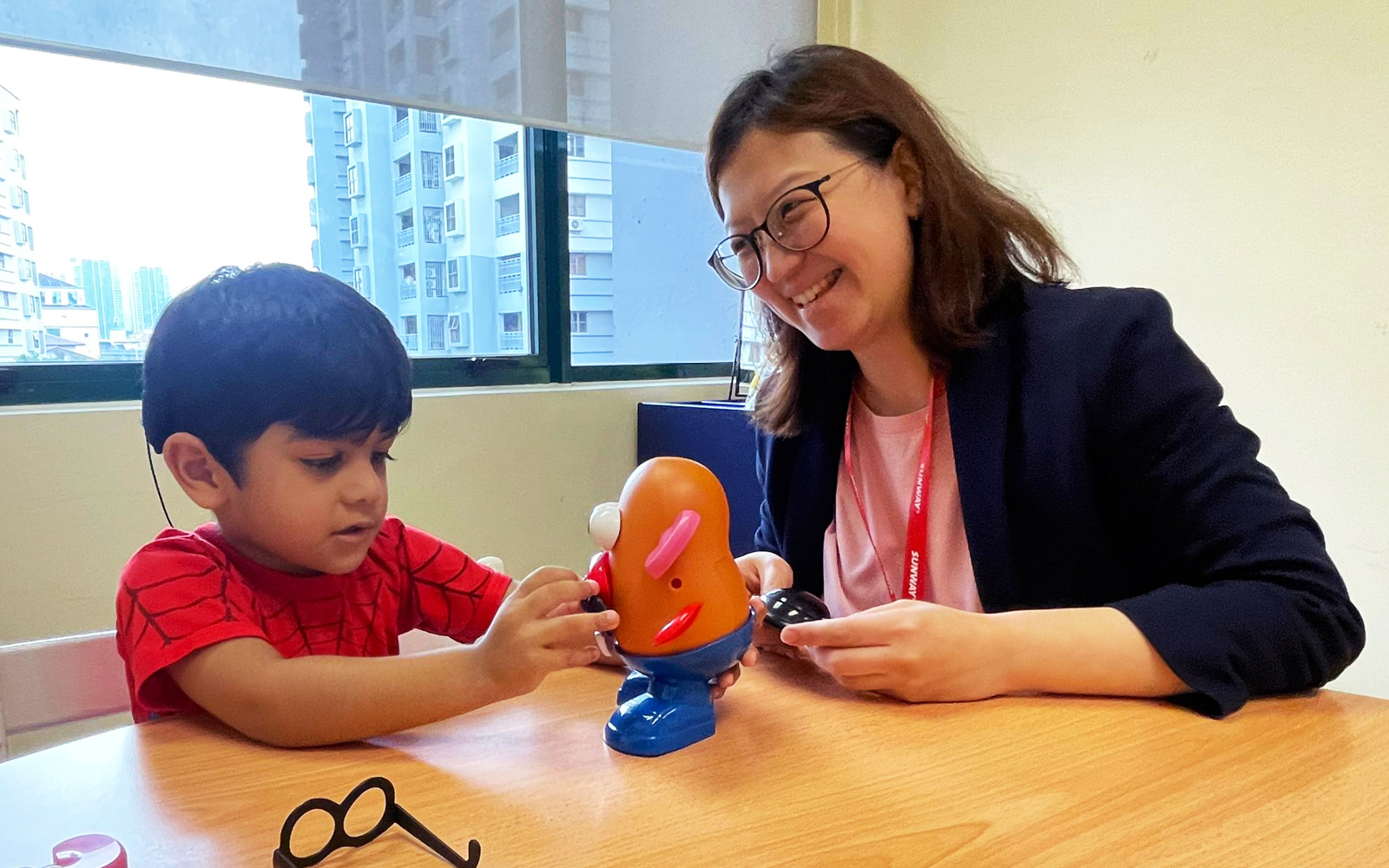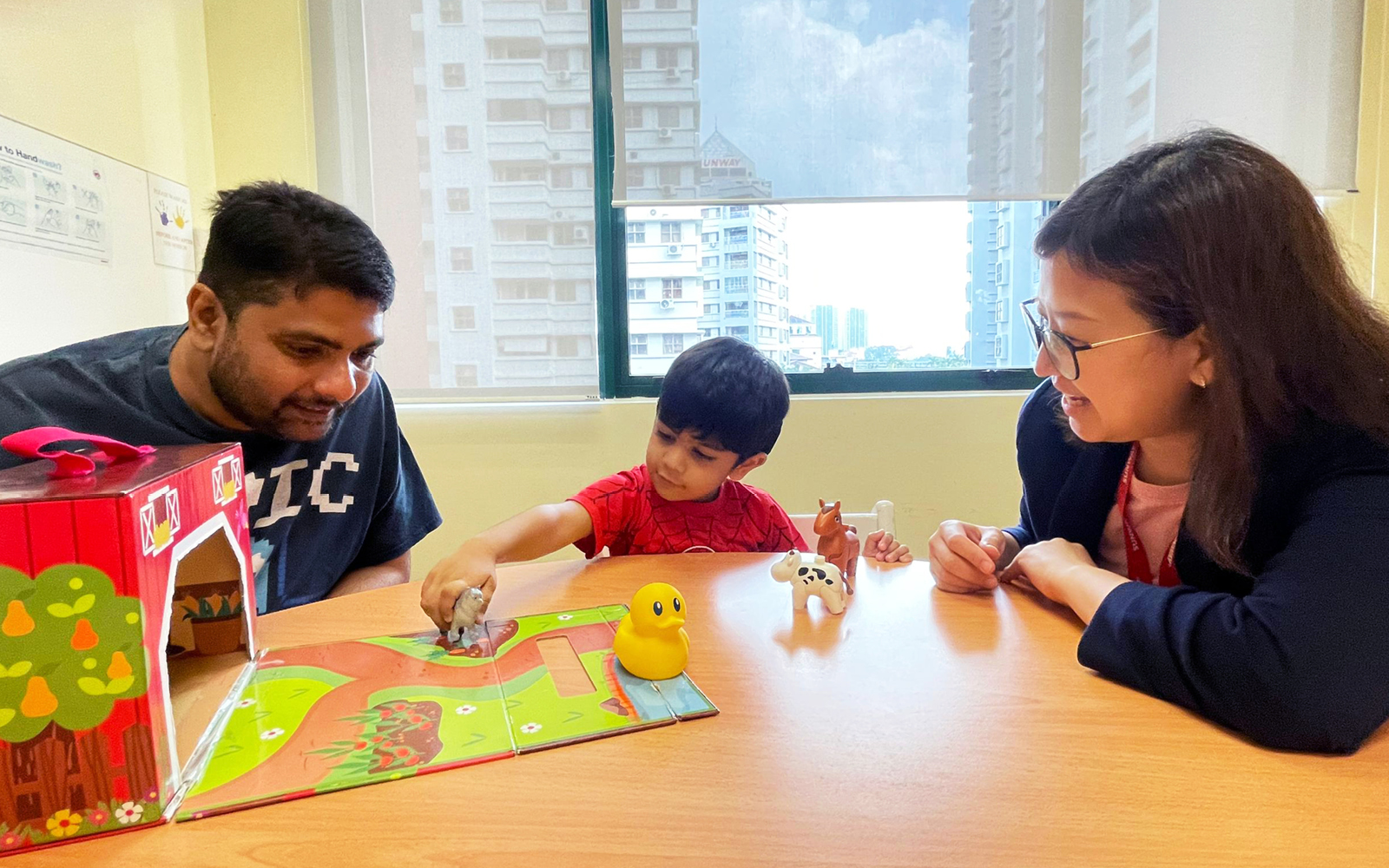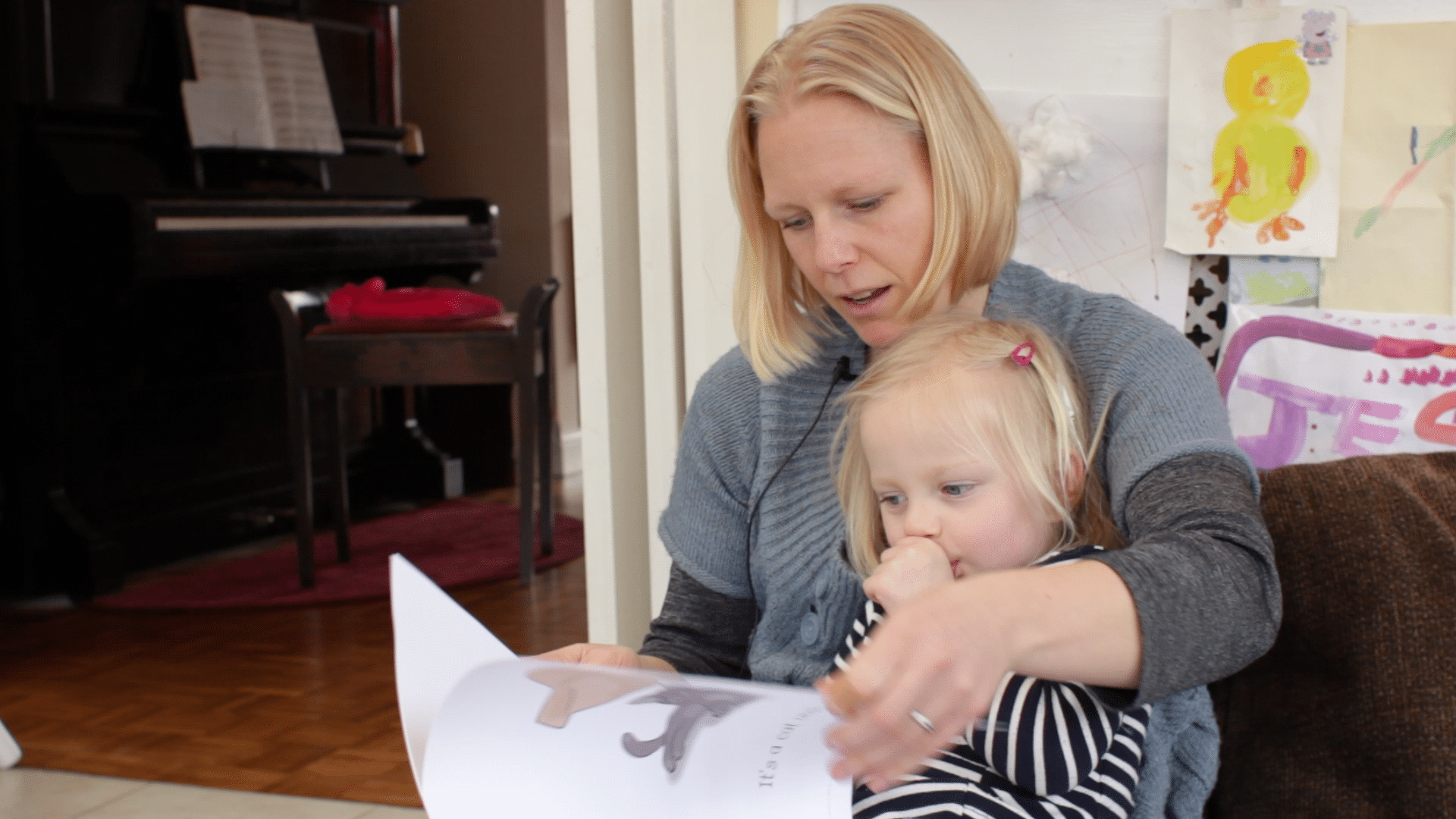
Jia Chuan Lim
Published Aug 27, 2024
Case Study: Overcoming Inconsistent Auditory Skills 1-2 Years After Cochlear Implantation
What can be done when a three-year-old child’s listening and speaking skills stop showing signs of improvement? What strategies can rehabilitation specialists use when a young cochlear implant recipient has inconsistent auditory skills and a short attention span? This case study provides insights that may be relevant for speech-language therapists with similar patients.

This article outlines in detail how Christine Yu Lee Mei, Senior Speech-Language Therapist from Sunway Medical Centre in Malaysia, and Lim Jia Chuan, Auditory-Verbal Therapist and Rehabilitation Manager from MED-EL Malaysia, worked together to overcome challenges such as inconsistent auditory skills and a short attention span in the clinical case below.
Case History: Approximately Two Years After Cochlear Implantation
- Jaiden is 3 years, 8 months of age and is from Cyberjaya, Malaysia.
- He is the third child of four. His parents both work from home and take care of their children.
- English is the main language spoken at home.
- Jaiden was diagnosed with bilateral profound sensorineural hearing loss at Sunway Medical Centre at 1 year, 6 months old. He was fitted with hearing aids right away.
- He received bilateral cochlear implants from MED-EL with RONDO 3 audio processors at 1 year, 9 months of age. His current hearing age (the time since Jaiden’s cochlear implants were switched on) is 1 year, 11 months.
- Jaiden’s parents reported that Jaiden has been very expressive ever since he was young. He used many gestures to communicate before he received his cochlear implants.
- After his cochlear implants were switched on, Jaiden and his family began weekly therapy at Sunway Medical Centre with Christine Yu.
- Jaiden’s family chose a listening and spoken language communication pathway for Jaiden.
Overcoming a Short Attention Span, Inconsistent Auditory Skills, and Environmental Issues
To improve Jaiden’s communication development and make sure he could get the most benefit from his cochlear implants, his speech-language therapist focused on the following:
Increasing Attention Span
- In the early months after cochlear implant activation, Jaiden had a short attention span and was easily distracted. Those around him would gain his attention by tapping on his shoulder and calling his name. At this time, Christine didn’t set a specific therapy goal to target his attention, but she continued to work on Jaiden’s listening skills.
- Songs were used to encourage Jaiden to listen. Jaiden was able to respond to familiar songs by performing the corresponding actions.
- Jaiden’s attention improved when his listening improved.
Improving Inconsistent Auditory Skills
After 12 months of CI use, Jaiden and his family began additional auditory-verbal therapy sessions with Jia Chuan at MED-EL Malaysia. Since then, Christine and Jia Chuan have worked closely together and with Jaiden’s parents to improve his listening and spoken language skills.
During this time, Jaiden began to imitate many speech sounds and words. However, his auditory skills were still inconsistent.
- Jaiden would call “papa,” but he couldn’t follow commands that contain the word “papa,” such as “give it to papa” or “ask papa to open it.”
- He also followed simple commands inconsistently.
Three goals were set to target Jaiden’s auditory comprehension of simple commands:
- To respond to his surroundings using listening (and enjoy doing so)
- To follow simple verbal commands spontaneously
- For Jaiden’s parents to reduce instances of tapping Jaiden’s shoulder to gain his attention and reduce their use of gesturing by using audition first and auditory hooks
Several strategies were used to improve Jaiden’s listening skills. These included: audition first, auditory hooks, increasing waiting time, acoustic highlighting, reducing distance, talking more, and singing. These strategies proved useful, but household noise was challenging.
In addition to the video above, our article on acoustic highlighting in our rehab at home series may be useful to share with your patient’s parents.
Regulating Household Noise Levels
Jaiden’s parents reported that their TV is turned on almost all the time, and understandably, the children often talk and make noise at the same time.
Therapists discussed with the family the importance of a quiet environment for listening development and shared some ideas for ways to reduce background noise at home, such as turning the TV off when it isn’t in use and adding carpets to tiled areas of the home.
"Communication with parents and finding out their household routines helped us guide them in applying strategies throughout Jaiden's daily activities."
Jia Chuan Lim
Speech-Language Therapist & Auditory-Verbal Therapist
Soon after implementing these tips, the family reported that Jaiden’s listening had improved and he was responding more quickly.
The following brochure for parents of children with bilateral cochlear implants has more details on creating good listening conditions at home.
Use of Rehabilitation Therapy Strategies Combined With Trial and Error
Christine used the auditory closure strategy to support Jaiden in filling in the gaps in phrases and songs, rather than imitating single words, to develop his ability to use words and phrases more spontaneously. She also coached his family to use this strategy. Early on, however, this strategy did not prove to be very helpful, as Jaiden struggled to fill in the correct words in phrases and songs.
It was also noted that Jaiden wasn’t yet able to answer many questions asked by his parents.
"Children with hearing devices have the potential to achieve age-appropriate listening and spoken language outcomes."
Jia Chuan Lim
Speech-Language Therapist & Auditory-Verbal Therapist
Therapists explained to his parents that auditory closure and expecting Jaiden to answer questions were not yet suited to his level of functioning (1 year post CI). Instead, the therapists demonstrated and practiced other more suitable strategies, such as putting the words on the plate for Jaiden to imitate, waiting, and auditory sandwiching. These strategies supported Jaiden in learning to listen as well as communicate more effectively using speech.
Update on Jaiden’s Development and Progress

Fast forward to now: Jaiden has shown a lot of improvement.
- His expressive language has progressed to single words and short phrases.
- He can follow more commands and understands many simple sentences.
- His parents have reduced their use of gestures and speak at an appropriate speech rate for Jaiden’s level.
Currently, Jaiden’s therapy goals include recalling two critical elements in a sentence and identifying basic concepts. Consistent attendance at therapy and carryover by his parents at home have helped Jaiden progress from imitation to using simple words and short phrases.
We thank Jaiden’s family for letting us share Jaiden’s story, including his progress and case information, in this blog article to support other professionals in their work with children with cochlear implants.
"Solving challenges together and witnessing users make progress with their devices is the most rewarding part of my work."
Jia Chuan Lim
Speech-Language Therapist & Auditory-Verbal Therapist
The success of Jaiden’s story is proof of strong collaboration among his therapists and parents. Christine is Jaiden’s primary therapist. She has supported the family since Jaiden’s diagnosis, through the candidacy process, and along their cochlear implant rehabilitation journey. Jia Chuan was able to support the family in her role as a Rehabilitation Manager at MED-EL Malaysia. She meets the family once a month to coach the parents on using listening and spoken language strategies to build and enhance Jaiden’s listening skills.
Materials to Support Speech-Language Therapists and Parents
For more information about acquisition of communication skills as well as developmental milestones for children, check out our Guides to Track Development. The tools found there not only make monitoring progress simple but also facilitate meaningful discussions between speech-language therapists and parents to set appropriate communication goals. Our article Positive Behavioral Intervention Strategies for Children With Challenging Behavior & Hearing Loss may also be relevant in some cases.
Thanks to Christine Yu Lee Mei, Senior Speech-Language Therapist from Sunway Medical Centre, Malaysia for contributing to this article.
References

Jia Chuan Lim
Jia Chuan Lim (B.Sp.Sc. (HONS), LSLS Cert AVT) is a Speech-Language Therapist and Auditory-Verbal Therapist serving a diverse, multicultural, multilingual community. She is the Rehabilitation Manager for MED-EL Malaysia.
Was this article helpful?
Thanks for your feedback.
Sign up for newsletter below for more.
Thanks for your feedback.
Please leave your message below.
CTA Form Success Message
Send us a message
Field is required
John Doe
Field is required
name@mail.com
Field is required
What do you think?
The content on this website is for general informational purposes only and should not be taken as medical advice. Please contact your doctor or hearing specialist to learn what type of hearing solution is suitable for your specific needs. Not all products, features, or indications shown are approved in all countries.
OM BAGLA
August 29, 2024
My daughter current age 28 years, had got two surgeries for Acoustic Neurofibroma NF-2, around seven years back. Presently she had lost complete hearing. Can Cochlear Implantation beneficial for her for hearing., as both tumors were on hearing nerves.
MED-EL
August 30, 2024
Hi there, thank you for reaching out and sharing your daughter's story with us. We recommend getting in touch with your medical experts and local MED-EL team for further assistance. Please get in touch with them directly via https://www.medel.com/contact-med-el Kind regards, Gordana

Jia Chuan Lim
Jia Chuan Lim (B.Sp.Sc. (HONS), LSLS Cert AVT) is a Speech-Language Therapist and Auditory-Verbal Therapist serving a diverse, multicultural, multilingual community. She is the Rehabilitation Manager for MED-EL Malaysia.

Jia Chuan Lim
Jia Chuan Lim (B.Sp.Sc. (HONS), LSLS Cert AVT) is a Speech-Language Therapist and Auditory-Verbal Therapist serving a diverse, multicultural, multilingual community. She is the Rehabilitation Manager for MED-EL Malaysia.





Conversation
1 Comment